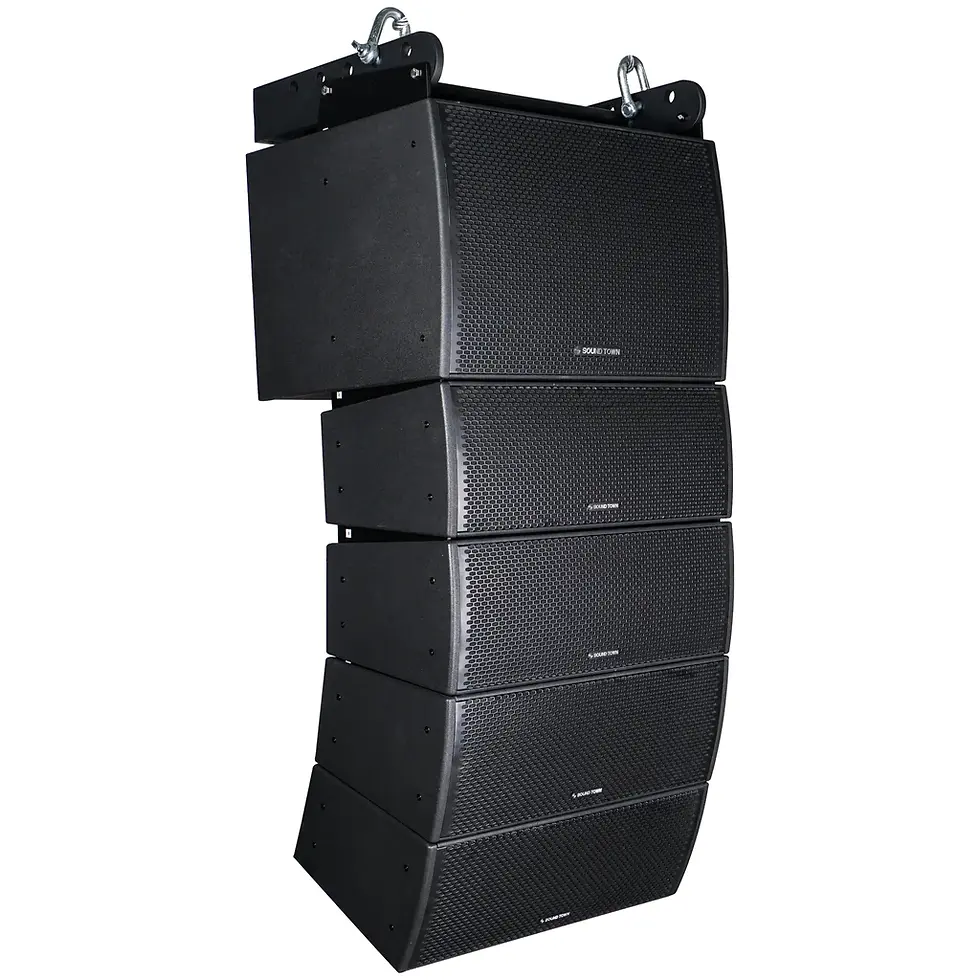The world of sound is a fascinating realm that relies heavily on the technical and strategic aspects of speaker placement. The positioning of speakers is not merely about aesthetics or convenience; it plays a pivotal role in shaping the sound quality and creating an immersive audio experience. Here, we delve deeper into the importance of speaker placement and its impact on various aspects of sound.
The Importance of Speaker Placement:
Comprehensive Sound Coverage

One of the primary reasons why speaker placement is crucial is the need for comprehensive sound coverage. The objective is to ensure that the sound is evenly distributed across the venue. Strategically positioned speakers can help avoid dead zones or areas with sub-par sound quality. Whether it's a large concert hall or a compact home theater, the goal is to ensure that every attendee or listener can clearly hear the audio, irrespective of their location in the venue. This aspect becomes especially critical in professional settings, where the success of an event can depend on the quality of sound coverage.
Imaging and Accurate Localization
Speaker placement significantly contributes to sound imaging and localization, essential aspects of an immersive audio experience. Sound imaging is the ability to discern the location of individual sounds within the audio field. It’s like having a 3D map of sound in your mind, where each instrument or voice has a distinct place. Localization, on the other hand, refers to accurately perceiving the position of different sound sources. When speakers are positioned with precision, they create a well-defined soundstage, enabling listeners to appreciate the spatial placement of instruments, vocals, or effects, as intended by the audio engineer or the artist.
Achieving Balance and Tonal Accuracy
Maintaining balance and tonal accuracy is another critical aspect influenced by speaker placement. When speakers are optimally positioned, they ensure a consistent frequency response across the venue. There are no significant peaks or dips in specific frequency ranges, leading to a more natural and accurate reproduction of the audio content. This means that all frequencies, from the highest treble to the lowest bass, are heard as the artist or audio engineer intended. Misplaced speakers, conversely, can lead to a skewed audio experience, with certain frequencies dominating over others.
Mitigating Phase Issues
Speaker placement also helps in mitigating phase issues. Phase issues occur when sound waves from multiple speakers interact, leading to phase cancellation or reinforcement. This phenomenon can result in a sound that lacks coherence and focus. By positioning speakers at the correct distance and angle, you can minimize phase cancellation, resulting in a seamless and focused sound. This is particularly important in a stereo or home theater setup, where the interaction between multiple speakers can significantly influence the overall sound quality.
Avoiding Reflections and Standing Waves
Another key issue that can be addressed by careful speaker placement is the minimization of unwanted reflections and standing waves. Reflections occur when sound waves bounce off surfaces and reach the listener's ears with a delay, causing muddiness and reduced clarity. Standing waves, on the other hand, are created when sound waves reflect back and forth between parallel surfaces, causing certain frequencies to be emphasized or canceled out. Proper speaker placement helps in reducing these issues, resulting in a cleaner and more intelligible sound.
Adapting to Venue Characteristics
Each venue, whether it's a concert hall, a conference room, or a living room, has unique characteristics, such as size, shape, and acoustics. Proper speaker placement takes these factors into account and allows for adjustments to optimize sound quality based on these specific attributes. By tailoring speaker placement to the venue, you can overcome acoustical challenges and maximize the potential of the space for optimal sound.
All in all, the importance of speaker placement cannot be overstated. It is a key component in achieving even sound coverage, accurate sound imaging and localization, tonal accuracy, minimizing phase issues, avoiding reflections and standing waves, and accommodating the unique characteristics of a venue. By understanding and applying the principles of speaker placement, you can enhance the overall audio quality, transforming an ordinary listening experience into an extraordinary auditory journey. Whether you are a sound professional, an audio enthusiast, or someone who simply loves to listen to good music, paying attention to speaker placement can make a world of difference in your sonic experiences.

Comments